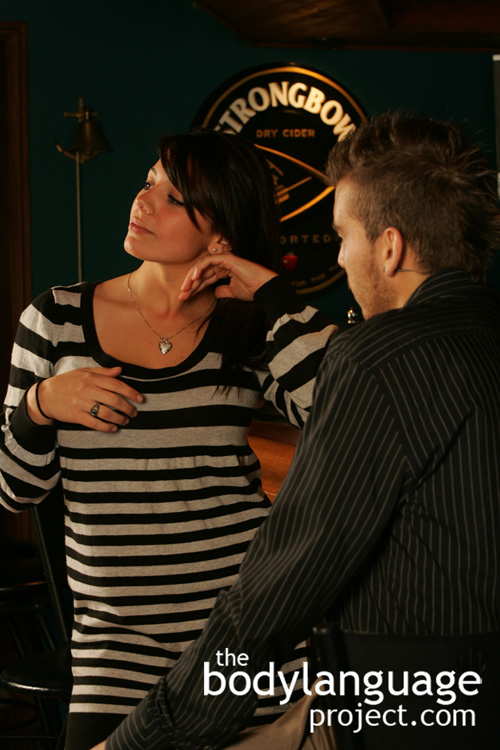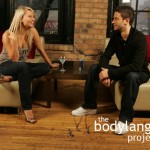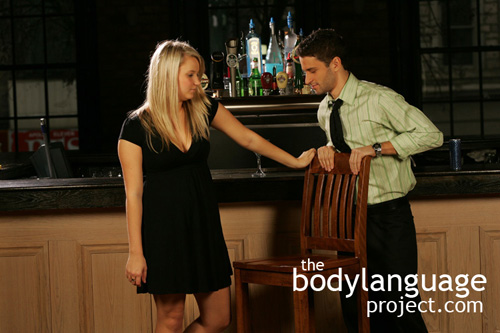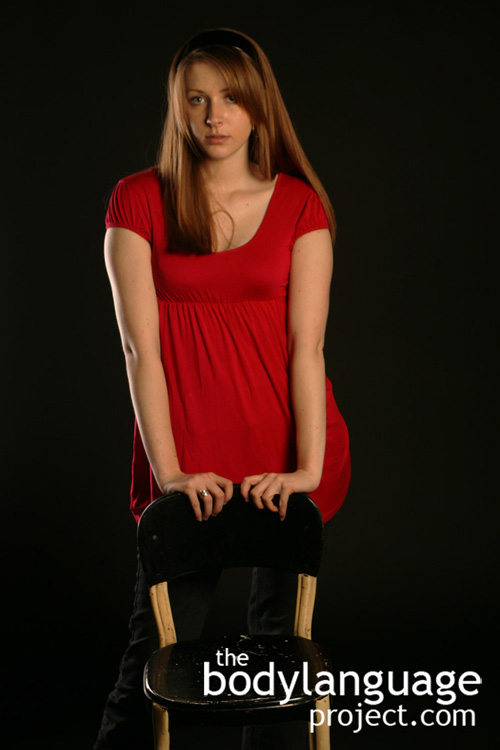Hair tossing is done by women to show off their luxurious hair to men. Hair tosses can be done by flicking the hair over the shoulder or away from the face. Hair can be removed from a band and twirled or rolled and placed on top of the head to expose the neck. Other hair signals include running the fingers through the hair to preen it, wrapping the hair around the neck or curling it around the finger. Added sexuality can come with a lip lick or moistening of the lips with lip gloss or adding lip stick to make them appear red and seductive. Having the lips slightly parted as if blowing a small stream of air through them can escalate the cues even more dramatically.
For hair play to be a sexual cue, it will be done in association with eye contact, absent of which might just be a form of soothing auto contact. Eye contact turns a fairly random gesture like touching the hair into one that is directional, meaning the eye contact sends the message to a person of interest. Other times, women use signals to “fish and lure” where signals happen in a more broadstroke fashion, absent of eye contact and direction, sent off into the room at large. These types of signals are done by women out of their conscious awareness by women who are hopefully available, but not always, as a response to inner thoughts and desires, turned into motivators. Women will deny this last fact, but the results speak for themselves by increased male attention. Playing victim by stating male come-ones as unwanted and annoying is naïve at best as the science says that women put out these signals so that men will see them during peek sexual receptivity. I suppose this does give women a case, for while they may have subconscious sexual feelings, they may not wish to act on them, but because of their hardwiring do. However, now that you have read this (as a woman), you are more aware of the underlying reasoning, and so have no more excuses! If women don’t want to be approached, show a cold shoulder, if they want not to be approached by specific men, given them no leads or incentives. Use body language to get the results you want.
Some other examples of hair play in courtship:
Above: Have you ever wondered what the significance of the tie is in male fashion? It’s a giant arrow that points to a man’s crotch! Yes, that’s right — it’s a great, big beacon drawing women’s eyes down from a man’s face to his boys! Getting that out of the way, let’s look at the clip! Here Julie shows interest by playing with her hair. Any motion we do, even subconsciously, serves to draw attention to our features.










